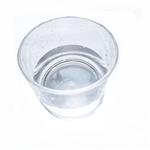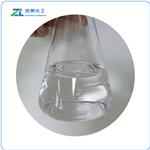Chemical Properties
Geranylacetone occurs in (5Z)-trans
as well as in (5E)-trans form and has been identified in fruits and in essential oils.
It is a colorless liquid with a fresh, green, slightly penetrating, rose-like odor.
Geranylacetone is an intermediate in the synthesis of other fragrance substances.
It is mainly produced from linalool. Another route starts from myrcene,
to which methyl acetoacetate is added under rhodium catalysis; geranylacetone is
subsequently obtained after saponification and decarboxylation. It is used
in perfumery in rose compositions, for example, in soap perfumes.
Chemical Properties
6,10-Dimethyl-5,9-undecadien-2-one has a green and rosy floral odor and fresh-floral, light, but rather penetrating
sweet-rosy, slightly green, magnolia-like odor. It blends well in lavender and fruity notes, where it imparts a clean and natural character. It helps to round out floral bouquets
Occurrence
Reported found in oil of citronella, yellow passion fruit, peppermint, Scotch spearmint oil, Japanese seafood,
scallop, tomato, tomato paste, citrus peel oils, carrots, papaya, melon, Parmesan cheese, milk powder, cognac, tea, starfruit, figs,
mango, red sage, nectarines, clams, pork, anise, and hyssop
Uses
It is used as a flavoring agent and adjuvant. It is also employed as a substance, extract, or preparation for diffusing or imparting an agreeable or attractive smell.
Definition
ChEBI: Geranyl acetone is a monoterpene ketone in which an (E)-geranyl group is bonded to one of the alpha-methyls of acetone. It is a component of essential oils from various plants including Nelumbo nucifera. It has a role as a flavouring agent, a fragrance, a volatile oil component and a plant metabolite. It contains a geranyl group.
Preparation
By reaction of linalool and ethyl acetoacetate with an alkaline catalyst and subsequent rearrangement and decarboxylation.
Application
Geranylacetone is an intermediate in nerolidol synthesis. It is used in perfumery in rose compositions, for example, in soap perfumes.
Aroma threshold values
Detection: 60 ppb to 6.4 ppm
Taste threshold values
Taste characteristics at 12 ppm: floral, fruity, fatty, green, pear, apple and banana nuances
General Description
6,10-Dimethyl-5,9-undecadien-2-one is one of the key volatile flavor compounds of tomato and certain species of mushroom.
Safety Profile
A skin irritant. When
heated to decomposition it emits acrid
smoke and irritating fumes.







